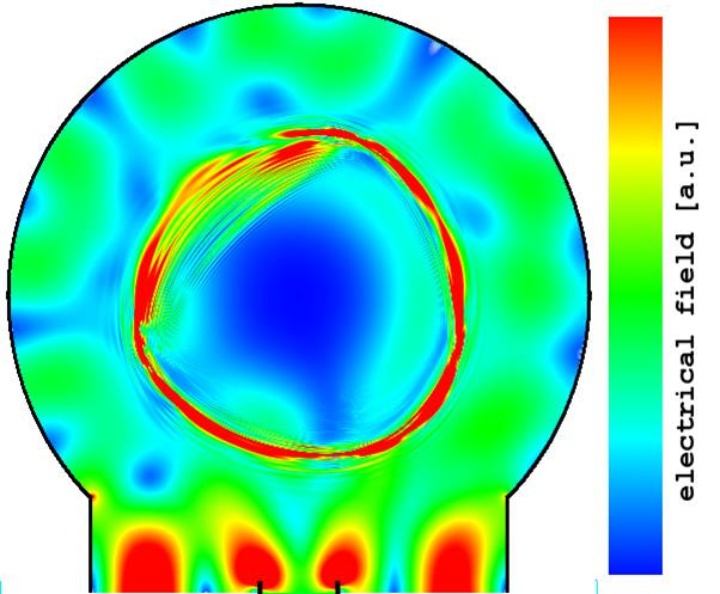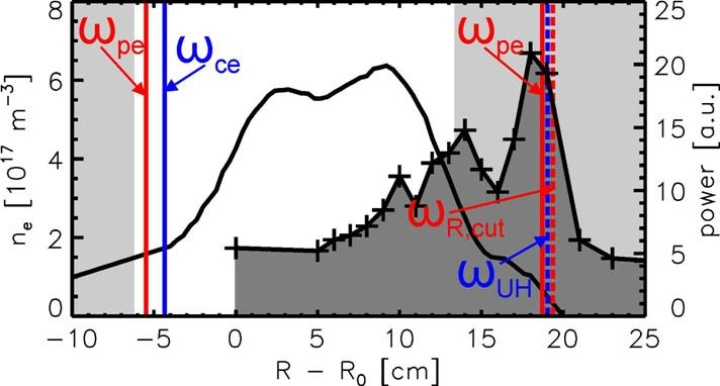In TJ-K plasmas are generated by microwaves at 2.4 and 8 GHz with a maximum power of 6 and 1.2 kW, respectively. The plasma is overdense, which means that the density exceeds the cutoff density. With electron temperatures of about 10 eV absorption at the fundamental resonance is found to be inefficient for the O-mode as well as for the X-mode.
The IPF-FD3D code was used to simulate the 2.45-GHz wave in the toroidal vacuum vessel of TJ-K including the overdense plasma. The system can be compared with a resonator limited by the vacuum vessel and the cutoff layer in the plasma. The wave is damped at the upper-hybrid resonance (UHR). At the resonance the originally transverse wave develops a strong longitudinal component (see figure, left). The measured hollow temperature profiles also indicate power deposition at the upper-hybrid resonance.
The wave field has been measured with miniaturised monopole antennas. The increase of the electric wave energy at the UHR has been confirmed (see figure, below). At 8 GHz, the temperature profile becomes more flat indicating an increased power deposition at the plasma centre. This points to heating via Bernstein waves.

Alf Köhn-Seemann
Dr.Lecturer, Principal Investigator, Plasma Dynamics and Diagnostics



